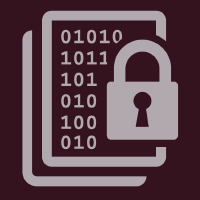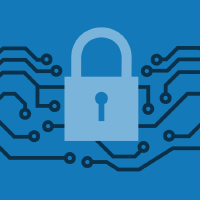Topic Menu
► Topic MenuTopic Editors


Trends and Prospects in Security, Encryption and Encoding

Topic Information
Dear Colleagues,
Multimedia data can be defined as a combination of different data types such as text, audio, images, and video. Every day, a huge quantity of data is transmitted through the internet and other open networks. Securing the transmitted data and preventing any misuse of it is a big challenge. Various security methodologies, such as digital watermarking, data encryption, steganography, data hiding, and blockchain, have been developed for securing multimedia data.
Digital watermarking is used in copyright protection and in securing multimedia data through a networked environment. Data encryption or cryptographic methods encrypt the data at the sender side, transmit this data from the sender to the receiver, and then decrypt it at the receiver side. In image steganography, the message image is hidden in a cover image and changes its properties, providing a secret communication method which prevents hackers/attackers from detecting the message’s presence.
During the last decade, several remarkable methodologies have been developed to improve the levels of multimedia security. Blockchain is an emerging technique to keep the data within an open decentralized network.
Eligible papers will cover theoretical and applied issues including, but not limited to, the following:
- Principles of data security and emerging hybrid techniques.
- Image and video encryption, watermarking, steganography, and data hiding.
- Speech and audio encryption, watermarking, steganography, and data hiding.
- Multimedia security using blockchain.
- FPGA-based implementation for multimedia security.
- Embedded hardware for multimedia security.
- Applications of multimedia security in smart cities.
- Deep learning techniques for modelling threats and vulnerabilities in software.
- Automatic modelling of software and hardware attacks and defences using artificial intelligence algorithms.
- Adversarial machine learning techniques applied to DevSecOps.
- Automatic prediction of security flaws in software and hardware using deep learning algorithms.
- Artificial intelligence for automatic error correction.
- Artificial intelligence techniques for algorithmic verification.
- Deep learning techniques for the generation and mutation of abnormal application traffic patterns.
- Deep learning techniques for symbolic model checking.
- Use of artificial intelligence techniques for vulnerability prediction.
- Development of AI techniques to measure software resilience.
- Deep learning techniques for the detection of programming errors in binary and modern programming languages.
- Automatic abstraction techniques applicable to programming code.
- Techniques to increase privacy when sharing information.
Prof. Dr. Ki-Hyun Jung
Prof. Dr. Luis Javier García Villalba
Topic Editors
Keywords
- watermarking
- steganography
- data encryption
- data decryption
- data hiding
- blockchain
Participating Journals
| Journal Name | Impact Factor | CiteScore | Launched Year | First Decision (median) | APC | |
|---|---|---|---|---|---|---|

Applied Sciences
|
2.5 | 5.3 | 2011 | 17.8 Days | CHF 2400 | Submit |

Cryptography
|
1.8 | 3.8 | 2017 | 23.9 Days | CHF 1600 | Submit |

Journal of Cybersecurity and Privacy
|
- | 5.3 | 2021 | 32.4 Days | CHF 1000 | Submit |

Journal of Sensor and Actuator Networks
|
3.3 | 7.9 | 2012 | 22.6 Days | CHF 2000 | Submit |

Sci
|
- | 4.5 | 2019 | 27.4 Days | CHF 1200 | Submit |

Symmetry
|
2.2 | 5.4 | 2009 | 16.8 Days | CHF 2400 | Submit |

MDPI Topics is cooperating with Preprints.org and has built a direct connection between MDPI journals and Preprints.org. Authors are encouraged to enjoy the benefits by posting a preprint at Preprints.org prior to publication:
- Immediately share your ideas ahead of publication and establish your research priority;
- Protect your idea from being stolen with this time-stamped preprint article;
- Enhance the exposure and impact of your research;
- Receive feedback from your peers in advance;
- Have it indexed in Web of Science (Preprint Citation Index), Google Scholar, Crossref, SHARE, PrePubMed, Scilit and Europe PMC.

